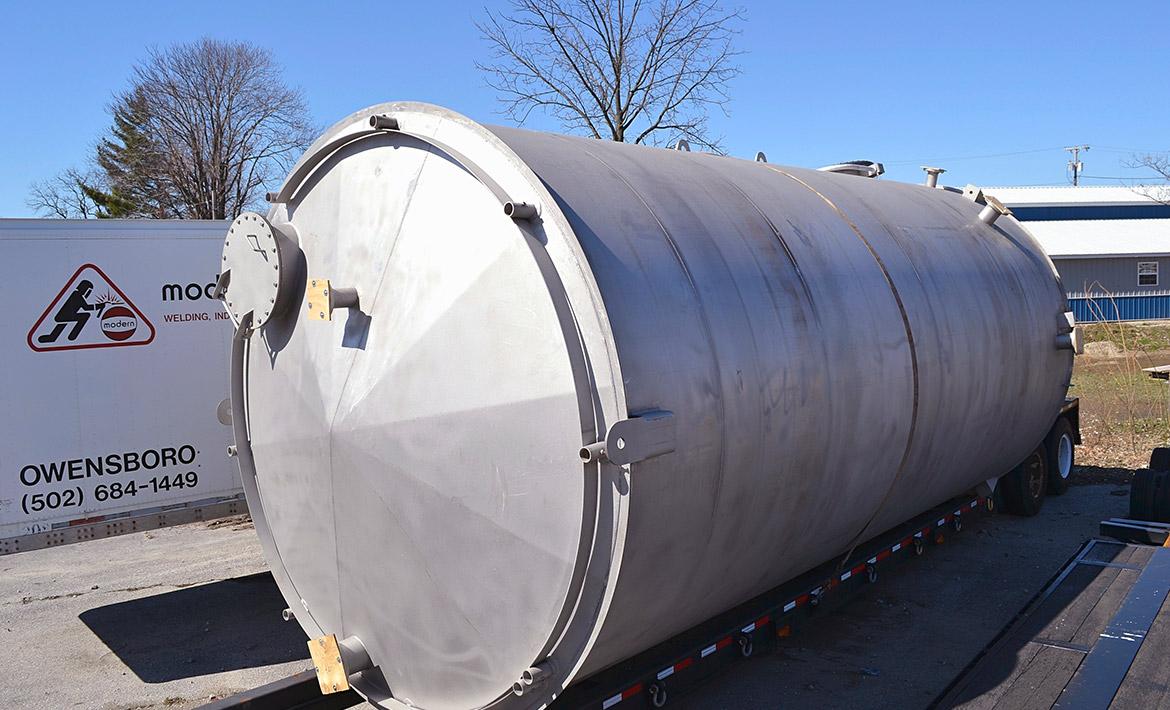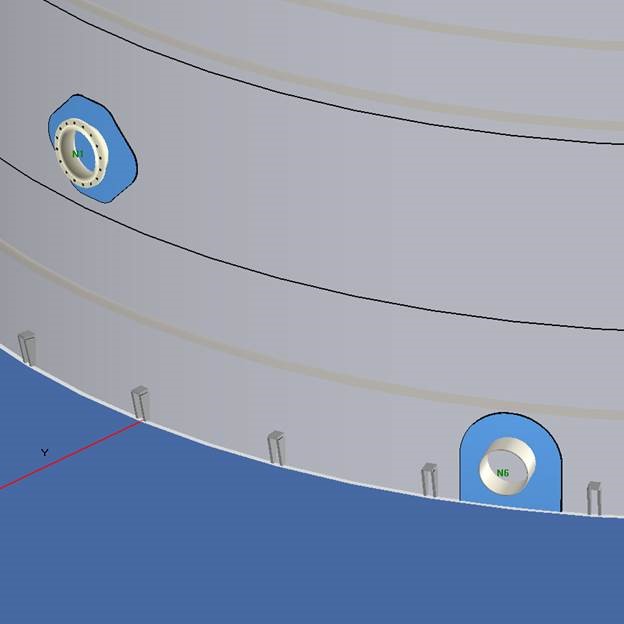The Importance of API 650 Welding Inspection in Industrial Structure Maintenance
Exactly How Welding Assessment Functions: A Comprehensive Overview for Professionals
Welding examination plays a crucial role in making certain the security and dependability of bonded frameworks. It entails an organized method that includes both visual examination and advanced screening techniques. Specialists need to familiarize themselves with key criteria and laws controling the sector. Understanding the usual issues that can emerge throughout welding is vital. This overview will certainly discover these components thoroughly, providing understandings right into the procedures that support quality and honesty in welding.
Comprehending the Significance of Welding Inspection
While several may ignore the value of welding examination, it plays an important duty in making sure the honesty and security of bonded structures. Reliable welding evaluation identifies possible problems and flaws that can endanger structural stamina and result in devastating failures. The assessment procedure encompasses different methods, such as visual evaluations, ultrasonic screening, and radiographic assessments, each contributing to the total evaluation of weld quality.
In addition to protecting the structural integrity, welding inspection assures conformity with industry criteria and customer specs. By making certain that welds satisfy required characteristics and tolerances, evaluations aid maintain the integrity and longevity of elements in different applications, from building and construction to aerospace. Additionally, a strenuous inspection procedure fosters a culture of top quality and responsibility amongst welders and manufacturers. Ultimately, welding examination is not simply a procedural step; it is an important method that underpins the safety and efficiency of crafted systems across diverse industries.
Trick Criteria and Rules in Welding Evaluation
The foundation of reliable welding evaluation hinges on adherence to developed regulations and criteria. Various organizations, such as the American Welding Society (AWS) and the American National Requirement Institute (ANSI), stated standards that assure quality and security in welding techniques. Trick criteria, such as AWS D1.1 for structural welding and ASME Section IX for stress vessels, give comprehensive requirements for welding certifications, examinations, and treatments. Regulative structures, including those from the Occupational Security and Health And Wellness Management (OSHA), mandate safety methods and worker protections in welding atmospheres. Conformity with these criteria is important for achieving constant weld quality and lessening the danger of failures. Furthermore, international standards like ISO 3834 further improve worldwide consistency in welding evaluation practices. Professionals should remain notified regarding these guidelines to ensure that their assessment techniques line up with industry assumptions and lawful requirements, thus protecting both personnel and architectural stability.
Preliminary Prep Work and Aesthetic Assessment Techniques

Efficient welding inspection starts with a thorough pre-inspection list that guarantees all necessary problems are met prior to the actual evaluation takes location. Following this preparation, visual flaw identification plays a necessary duty in reviewing weld quality, allowing assessors to detect concerns such as cracks or incorrect combination. Together, these methods develop the structure for a successful welding evaluation process.
Pre-Inspection List
Before commencing any welding evaluation, a detailed pre-inspection list is vital to guarantee that all needed preparations are finished which aesthetic examination methods are effectively employed. Secret elements of this checklist consist of validating the welding treatment requirements (WPS), ensuring all equipment is adjusted and in great functioning condition, and verifying that the examiner has the needed qualifications. Additionally, it is essential to evaluate any kind of previous assessment records and to analyze the workplace for safety and security hazards. The examiner must additionally confirm that all appropriate paperwork, such as material certificates and assessment documents, is readily available. Completing this checklist helps to establish a solid foundation for a successful inspection process, enhancing the reliability of the outcomes gotten.
Aesthetic Flaw Identification
A successful aesthetic flaw identification process starts with cautious initial prep work and the application of established aesthetic assessment techniques. Assessors need to ensure that the welding area is well-lit and tidy, as sufficient visibility is important for discovering issues. A detailed examination of the weld joint's surface area permits the recognition of interruptions, such as fractures, undercuts, or porosity. Examiners often use tools like multiplying glasses or mirrors to enhance their sight of hard-to-reach areas. In addition, they ought to be acquainted with the particular welding criteria and guidelines pertinent to the project. By adhering to these techniques, inspectors can successfully determine prospective concerns, protecting the honesty of the weld and compliance with market criteria.
Non-Destructive Testing Techniques: A Review
Non-destructive testing (NDT) techniques play an essential function in the welding inspection process by making sure the honesty and reliability of bonded frameworks without causing any kind of damage (API 650 Welding Inspection). These strategies allow assessors to assess the top quality of my website welds while protecting the elements being analyzed. Typical NDT methods consist of ultrasonic screening, radiographic testing, magnetic particle testing, and dye penetrant screening, each offering unique advantages
Ultrasonic testing uses high-frequency acoustic waves to identify inner flaws, while radiographic screening uses X-rays or gamma rays to imagine the interior framework of welds. Magnetic particle testing discloses surface and near-surface problems by applying an electromagnetic field and iron particles to the weld location. Color penetrant screening highlights surface-breaking problems with the application of a colored dye. Together, these NDT methods supply crucial insights into weld top quality, allowing specialists to make educated decisions relating to security and conformity in welding applications.
Usual Problems and Their Ramifications
Determining typical company website flaws in welded joints is necessary for preserving structural honesty and safety and security. Numerous flaws can occur during the welding procedure, each bring potential implications for the general performance of the framework. Porosity, identified by tiny gas pockets within the weld, can deteriorate the joint and jeopardize its load-bearing ability. Splits might develop as a result of thermal anxiety or incorrect cooling, leading to possible failure under stress. Insufficient combination takes place when the weld metal does not fully bond with the base product, resulting in weak joints that might not endure intended lots. Undercutting, where the base steel is deteriorated, can additionally reduce the reliable cross-section of the weld. Additionally, too much support can produce stress concentrations that can result in failing. Recognizing these issues immediately allows for restorative procedures, making sure the longevity and dependability of bonded structures in vital applications.
Devices and Equipment Utilized in Welding Inspection
Efficient welding examination depends on a variety of specialized tools and tools to assure the high quality and honesty of bonded joints. Essential instruments consist of aesthetic inspection tools, such as multiplying glasses and borescopes, which enable assessors to very closely take a look at welds for surface area defects. Non-destructive testing (NDT) techniques, such as ultrasonic testing, radiographic testing, and magnetic fragment screening, are basic for recognizing internal defects without harming the product.
Dimension devices, consisting of calipers and weld gauges, assist analyze measurements and determine conformity with requirements. Furthermore, hardness testers assess the mechanical properties of bonded joints. Individual safety tools (PPE) is additionally necessary, protecting the security of examiners while working in possibly unsafe settings (API 650 Welding Inspection). Each device offers a details objective, jointly improving the efficiency of welding assessment and adding to the dependability of completed projects
Frequently Asked Inquiries
What Credentials Are Needed to Come To Be a Welding Assessor?
To end up being a welding inspector, individuals typically require appropriate accreditations, such as AWS CWI or CSWIP, in addition to experience in welding procedures, engineering principles, and expertise of inspection techniques, safety and security click site requirements, and appropriate codes.
How Commonly Should Welding Inspections Be Performed?
Welding examinations must be carried out frequently, ideally at various project phases, including pre-weld, during-weld, and post-weld. Regularity might likewise depend on sector standards, project specifications, and the complexity of the welds entailed.
Can Welding Defects Be Repaired After Assessment?

Yes, welding flaws can commonly be repaired after evaluation. Depending upon the extent and kind of problem, proper approaches such as reworking or extra welding may be employed to restore structural integrity and safety conformity.
What Industries Require Routine Welding Inspections?

Numerous sectors, including building and construction, production, aerospace, and automotive, require regular welding evaluations - API 650 Welding Inspection. These examinations ensure adherence to safety standards and quality control, lessening dangers connected with architectural stability and operational efficiency in bonded elements
Just how Do I Pick a Welding Examination Service?
To pick a welding examination solution, one must consider qualifications, experience, accreditations, and industry credibility. Additionally, reviewing customer reviews and assuring the solution satisfies relevant criteria can help guarantee high quality assessments and dependable results.

While numerous may underestimate the relevance of welding evaluation, it plays a crucial function in guaranteeing the honesty and safety of welded frameworks. Trick standards, such as AWS D1.1 for architectural welding and ASME Area IX for pressure vessels, provide complete criteria for welding credentials, procedures, and assessments. Efficient welding examination starts with a complete pre-inspection list that assures all essential conditions are satisfied before the actual evaluation takes location. Prior to starting any kind of welding inspection, a complete pre-inspection list is crucial to guarantee that all necessary preparations are completed and that visual evaluation techniques are successfully employed. Non-destructive screening (NDT) approaches play an important duty in the welding examination procedure by making sure the honesty and reliability of bonded frameworks without creating any damage.